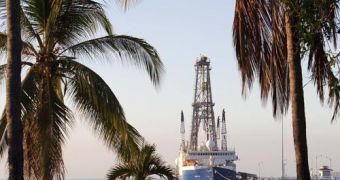In a bid to understand why the tectonic plates around the Pacific Ocean are causing such massive earthquakes, experts have recently collected new core samples from the ocean floor. They hope that analyzing these sediments will give them a clearer picture of what's going on.
The samples collected from the eastern Pacific cover about 1,500 meters (almost 1 mile), which gives them an ample resolution and span. Some experts believe they hold the key to explaining massive tremors such as the Tohoku Earthquake.
The natural disaster struck the northeastern coasts of Japan on March 11, causing widespread damage and loss of life, as well as one of the most severe nuclear accidents the world has ever known.
As such, defending against tremors is beginning to emerge as a top public safety priority, but geologists still don't know how to predict the unpredictable. The goal of the Integrated Ocean Drilling Program (IODP) Costa Rica Seismogenesis Project (CRISP) Expedition is to help them in this regard.
Extracted off the coast of Costa Rica, the samples should theoretically cover about 2 million years of tectonic activity alongside this highly-active tectonic boundary. The scientific drilling vessel JOIDES Resolution was in charge of the harvesting operations.
“It's critical to understand how subduction zone earthquakes and tsunamis originate – especially in light of recent events in Japan. The results of this expedition will also help us learn more about our own such zone off the Pacific Northwest,” scientist Rodey Batiza explains.
She holds an appointment with the Division of Ocean Sciences (DOS) at the US National Science Foundation. The NSF partially supported the expedition, and funds the IODP in the long-run.
“We know that there are different factors that contribute to seismic activity – these include rock type and composition, temperature differences and how water moves within the Earth's crust, but what we don't fully understand is how these factors interact with one another and if one may be more important than another in leading up to different magnitudes of earthquakes,” adds Paola Vannucchi.
She was the co-chief scientist of the new expedition, alongside scientist Kohtaro Ujiie from the University of Tsukuba in Japan. Vannuchi is based at the University of Florence in Italy.
Geologists say that the new work could prove extremely useful, considering that as much as 8 in 10 earthquakes above magnitude 8 occur alongside subduction zones. These are areas where two tectonic plates meet, with one of them sinking beneath the other.
The subduction zone off Costa Rice is roughly the same as 50 percent of the world's other subduction zones, so the data extracted here should have wide applicability, the researchers conclude.

 14 DAY TRIAL //
14 DAY TRIAL //